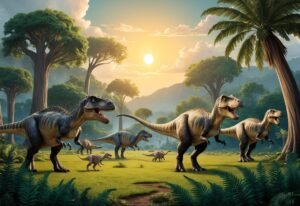Best Age to Learn a New Language: Surprising Findings Revealed

Studies show that the optimal time to start learning a second language is before age 10, but with effort and practice, adults can also become proficient.

Studies show that the optimal time to start learning a second language is before age 10, but with effort and practice, adults can also become proficient.

Dinosaurs lived from about 245 to 66 million years ago during the Mesozoic Era, which includes the Triassic, Jurassic, and Cretaceous periods.

The debate continues on whether quantum physics suggests a higher power, with no definitive answer; both science and religion explore big questions about reality.

The TikTok Inverted Filter flips faces horizontally, revealing how others see us, sparking viral trends and discussions on self-image and facial asymmetry.

Ringed seals are common Arctic inhabitants facing challenges from climate change due to shrinking sea ice, affecting their habitat and survival.

Scorpions are ancient, nocturnal arachnids with strong pincers and venomous stingers that glow under UV light; they play crucial ecological and cultural roles.

Ancient Romans socialized and conducted business in communal public latrines called foricae, used shared sponges on sticks for wiping, and had advanced sewer systems.

Sun bears, the smallest bear species, dwell in Southeast Asia's forests and are known for their unique chest patches, excellent climbing skills, and long tongues for honey.

Sea anemones are colorful marine invertebrates that look like flowers but use stinging cells to catch food and may symbiotically host clownfish.

The term 'White Native Americans' often refers to people of mixed European and Native American ancestry, raising questions about identity and who defines it.